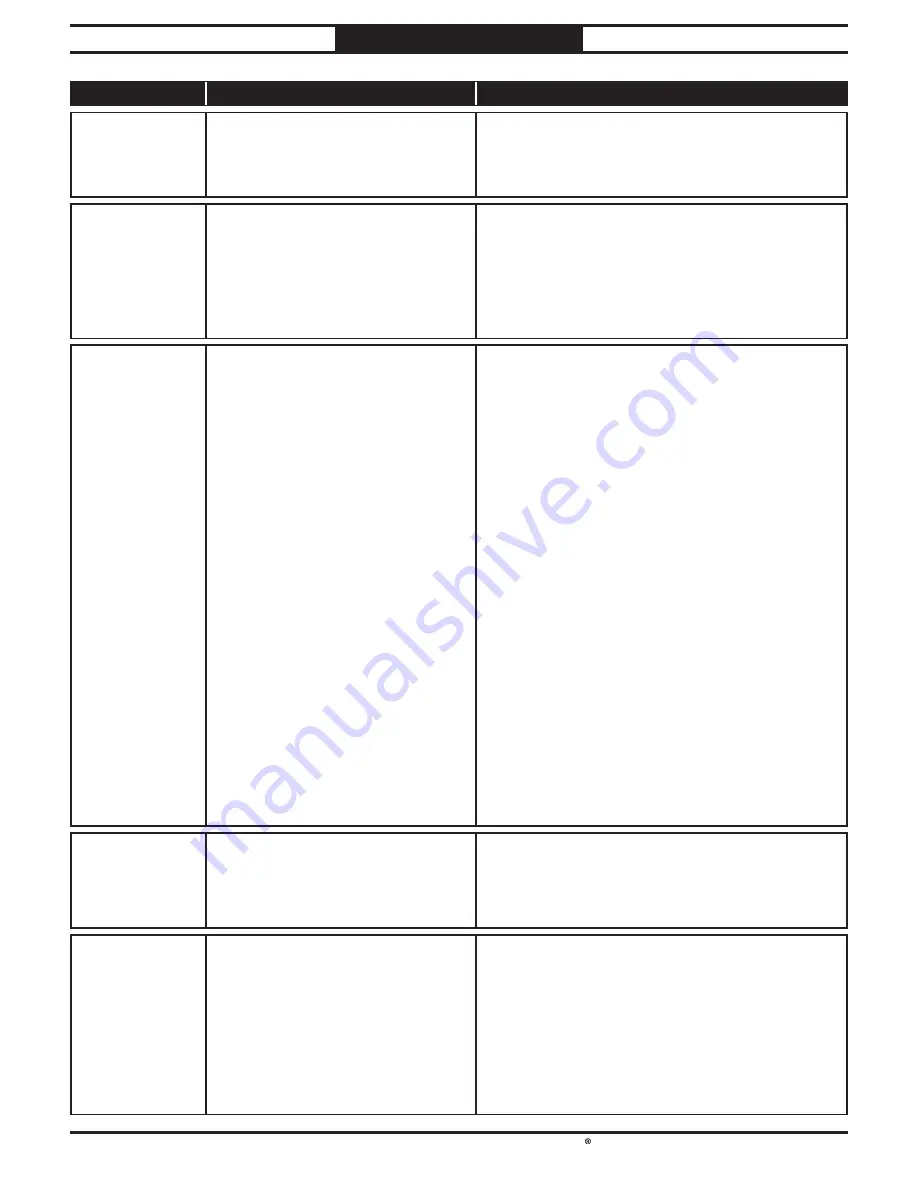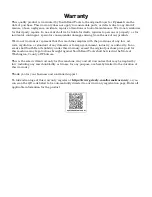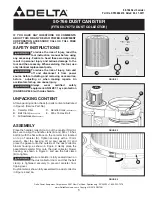
South Bend Tools
For Machines Mfd. Since 11/20
Model SB1099
-41-
TROUBLESHOOTING
Symptom
Possible Cause
Possible Solution
Remote control
does not operate
dust collector.
1.
Emergency Stop button is pressed in.
1.
Rotate Emergency Stop button to reset.
2.
Machine is disconnected from
power.
2.
Verify machine is connected to power source.
3.
Remote control battery is weak or
dead.
3.
Replace battery.
4.
Wall or barrier disrupts radio
frequency, or controller is too far
away.
4.
Move machine away from barrier; use remote
within 50' of machine.
5.
Remote control not paired.
5.
Program receiver to accept remote control (Page 39).
Dust collector
blows sawdust into
the air.
1.
Duct clamps or end cap not properly
clamped and secured; ducting loose/
damaged.
1.
Secure ducts and end cap, making sure duct and
bag clamp are tight; tighten/replace ducting.
2.
Cylinder or funnel seals are loose or
damaged.
2.
Tighten all mounting and sealing points; replace
damaged seals/gaskets or use silicon to seal.
Loud, repetitious
noise, or excessive
vibration coming
from dust collector
(non-motor
related).
1.
Dust collector not on a flat surface
and wobbles/casters not locked.
1.
Stabilize dust collector; lock casters.
2.
Impeller damaged and unbalanced.
2.
Disconnect dust collector from power; inspect
impeller for dents, bends, or loose fins; replace
impeller if damaged.
3.
Impeller loose on the motor shaft.
3.
Secure impeller; replace motor and impeller as a set
if motor shaft and impeller hub are damaged.
Filter brush motor
does not start after
machine is powered
OFF.
1.
Motor connected incorrectly at
switch box.
1.
Correct motor wiring connections (Page 43).
2.
Timer at fault.
2.
Inspect/replace if at fault.
3.
Filter brush motor at fault.
3.
Replace motor.
Dust collector does
not adequately
collect dust
or chips; poor
performance.
1.
Collection bag/end cap full.
1.
Replace collection bag (Page 35)/empty end cap
(Page 36).
2.
Canister filter clogged/at fault.
2.
Clean canister filter (Page 36); replace canister
filter after 1 year of regular use (Page 37).
3.
Ducting blocked/restricted.
3.
Remove ducting from dust collector inlet and
unblock restriction. A plumbing snake may be
necessary.
4.
Dust collector too far away from
point of suction; duct clamps not
properly secured; too many sharp
bends in ducting.
4.
Relocate dust collector closer to point of suction; re-
secure ducts; remove sharp bends (Page 22).
5.
Lumber is wet and dust is not
flowing smoothly through ducting.
5.
Only process lumber with less than 20% moisture
content.
6.
Ducting has one or more leaks, or
too many open ports.
6.
Seal/eliminate all ducting leaks; close dust ports for
lines not being used (Page 22).
7.
Not enough open branch lines at
one time, causing velocity drop in
main line.
7.
Open 1 or 2 more blast gates to different branch
lines to increase main line velocity.
8.
Ducting and ports are incorrectly
sized.
8.
Install correctly sized ducts and fittings (Page 22).
9.
Machine dust-collection design
inadequate.
9.
Use dust-collection hood on stand.
10.
Dust collector undersized.
10.
Install larger dust collector.
11.
Unused inlet adapter port(s)
uncovered.
11.
Cover unused inlet adapter port(s).






























